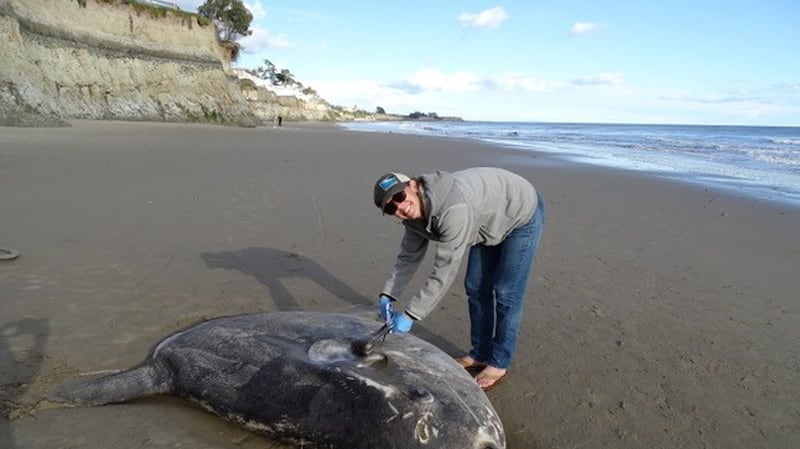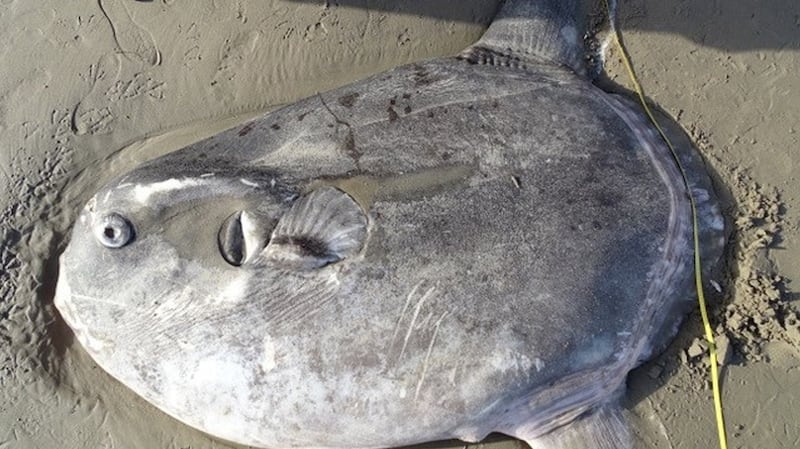A giant sunfish has washed up on a beach in California, the first time this particular species of the animal has been sighted in the northern hemisphere in 130 years.
The sunfish measuring 2.05 metres (6ft 8 in) and weighing several hundred kilograms, or more than 600lb, was found on the beach of the Coal Oil Point Reserve in California.
Staff at the reserve posted photographs of the enormous fish on social media, incorrectly but understandably identifying it as an ocean sunfish (Mola mola), which is commonly found in seas off the US.

Instead, it was something more remarkable, a hoodwinker sunfish (Mola tecta), a rare species that was first spotted in 2014 by a Danish PhD student working in New Zealand, and formally identified in 2017.
“We don’t really know much about it,” said Marianne Nyegaard, associate researcher at Auckland War Memorial Museum, who discovered and named the new species, and was able to inform the California team that they had a hoodwinker on their hands.
With the exception of one documented sighting off the Netherlands in 1889, the hoodwinker has only ever been spotted in southern hemisphere waters, off New Zealand, Australia, Chile and Peru.

“That’s as far north as I have seen it, that corresponds to a cold water current,” she said. “For this fish to suddenly rock up in California is really exciting.”
It can be difficult to identify the different species of sunfish – which is why it took so long for the hoodwinker to be classified as a separate species – and Ms Nyegaard has trawled through dozens of reports of hoodwinker sightings on social media. As a result, when she was sent the Facebook post from the Coal Oil Point Reserve, she had her doubts.
“I was really sceptical,” she said.
But after asking staff from the reserve to go out and take more pictures of the features that distinguish a hoodwinker sunfish from an ocean sunfish – a flap dividing the rounded clavus that the fish has in place of a tail, bony structures along the clavus and the scale structure – it was clear it was a hoodwinker.
“When the pictures came through, they were so so clear, I just could not believe it, it was a mix of disbelief and excitement,” she said.
As to why this particular fish made its way so far north – potentially more than 4,000 miles (6,800km) from home – that is unclear.
“It could just be a lost sunfish, or it could be we don’t understand the distribution yet,” she said. “Then of course there is the whole issue around climate change, we can’t conclude anything from just one specimen, but of course it is the question.”
Researchers from the University of Santa Barbara collected samples from the dead fish, including one bound for Ms Nyegaard’s research. The genetic sample will enable her to check if the Californian hoodwinker is from the same population as those off New Zealand.
The genetic analysis will be done by Ms Nyegaard’s sister Dr Mette Nyegaard, a geneticist at Aarhus University in Denmark.–Guardian










